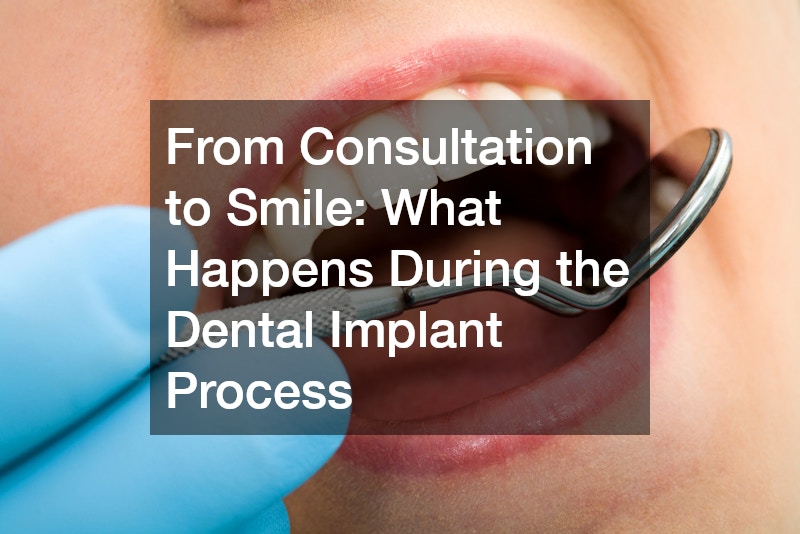The advent of dental implants has marked a revolutionary step in restorative dentistry, offering not only functional and aesthetic benefits but also promoting significant improvements in bone health and facial structure. Dental implants have surged in popularity as an effective solution for tooth loss, and understanding their impact on bone health and facial structure can provide insight into their long-term advantages. This article delves into the mechanisms underlying these benefits, shedding light on why dental implants are often recommended by dental professionals.
Recognizing the role of dental implants in maintaining bone density and supporting facial integrity is essential for those considering tooth restoration options. Unlike traditional dentures or bridges, implants offer a more permanent and biologically integrated solution. This growing trend towards choosing dental implants underscores their significance in achieving optimal oral health and prolonging the longevity of one’s natural smile.
As the demand for dental implants continues to rise, it becomes increasingly important to articulate and comprehensively understand the myriad ways in which they contribute to both oral health and overall well-being. By providing stability and support, dental implants not only enhance the function of the oral cavity but also have profound effects on a person’s facial appearance and confidence.
Do Dental Implants Prevent Bone Loss?
Mechanism of Osseointegration
The success of dental implants largely depends on a process known as osseointegration, a biological mechanism through which the implant anchors itself into the jawbone. This process mimics the natural relationship between teeth and bone, allowing the implant to become a permanent part of the oral structure. Upon insertion into the jaw, the implant undergoes a period of integration, where osteoblasts—bone-forming cells—begin to grow on and around the titanium post, creating a stable base akin to a natural tooth root.
Osseointegration is crucial in preventing bone loss because it stimulates the jawbone, thereby halting the deterioration that commonly follows tooth loss. Unlike dentures, which rest on the gums, or bridges, which rely on adjacent teeth, implants provide the necessary stimulation to maintain bone density. This is vital for preventing the characteristic shrinkage in jawbone that can lead to significant changes in facial appearance over time.
The unique capacity of dental implants to bond with the bone sets them apart as a superior choice for tooth replacement. By preserving the bone structure, implants not only ensure a stable and comfortable fit but also contribute to the overall health of the mouth. Thus, the process of osseointegration is not just about physical integration; it’s about fostering a healthy, regenerating environment within the jaw.
Comparison with Other Tooth Replacement Options
When comparing dental implants to other tooth replacement options like bridges and dentures, one of the standout differences lies in how these solutions affect bone health. Dental bridges, while effective in preserving the alignment of remaining teeth, do not address bone loss in the area of the missing tooth. Instead, they divert the pressure onto surrounding teeth, potentially leading to their premature wear and lack the osseointegrative benefit of implants.
In contrast, dentures primarily serve to replace the visible portion of lost teeth without any integration into the jawbone, often leading to gradual bone loss underneath. Over time, this can lead to a reduction in the bone height and volume, contributing to the need for frequent adjustments as the jaw changes shape. As such, dentures provide a temporary solution at best, without addressing the root cause of bone loss.
Dental implants, conversely, provide a more comprehensive approach by effectively combating bone deterioration through direct stimulation. Their ability to bond with the bone and support natural function makes them a preferred option for those seeking long-term benefits. By choosing dental implants, patients can prevent the bone loss that other solutions fail to address, ultimately resulting in a healthier and more sustainable outcome.
Importance of Maintaining Jawbone Density
Maintaining jawbone density is a critical component in preserving overall oral health, affecting not only the functionality of the mouth but also the structural integrity of the facial skeleton. Jawbone density plays a crucial role in anchoring teeth, facilitating proper dental alignment, and ensuring the stability of any prosthetic devices used to replace natural teeth. Without proper bone density, patients are at risk for a host of complications, including misalignment, increased fragility of remaining teeth, and changes in facial structure.
Dental implants play a pivotal role in maintaining jawbone density by acting as natural tooth roots, preventing the bone resorption that often occurs after tooth loss. Bone loss not only compromises the function and aesthetics of the mouth but also impacts a patient’s quality of life. By preserving bone structure, implants help maintain the natural contours and proportions of the face, reducing the risk of sunken cheeks and premature aging.
Over time, the failure to maintain jawbone density can lead to significant oral health issues, underscoring the importance of proactive treatment strategies. Implants offer a means to stabilize the jaw, promote bone growth, and ensure the longevity of the entire dental arch. As such, they provide an invaluable solution for preserving the foundation of oral health, particularly in the context of long-term restorative care.
How Do Dental Implants Affect Facial Structure?
Restoration of Natural Appearance
Dental implants are lauded for their ability to restore a natural appearance, seamlessly integrating into the mouth and supporting the facial structure much like natural teeth. Unlike dentures that can sometimes appear artificial or cause facial sagging due to bone loss, implants contribute to a more youthful and vibrant smile by providing underlying support to facial muscles. This ensures that the contours of the lip and cheek maintain their natural positions, preventing the sunken look often associated with missing teeth.
Another significant advantage of implants is their aesthetic appeal. They are designed to closely match the appearance and function of natural teeth, thereby enhancing a patient’s confidence and self-esteem. Because they are permanently fixed in the jaw, there’s no need to worry about slippage or embarrassment, common concerns associated with removable dentures.
The commitment to mimicking natural teeth can greatly enhance the overall appearance, improving not just the aesthetics of the smile but also the individual’s whole facial structure. This kind of transformation underscores the value implants offer beyond dental function, contributing to one’s overall sense of well-being and allowing for a natural, permanent solution that enhances the aesthetics of the face.
Correction of Sunken Facial Features
A key concern following tooth loss is the development of sunken facial features, a condition that results from the resorption of the jawbone. Dental implants help to combat this issue by providing the necessary support structure, preventing the collapse of facial features and promoting a more balanced facial appearance. By stabilizing the bone and gum tissue, implants contribute to the longevity of youthful profiles.
Early intervention with dental implants can forestall the progression of these changes, offering a preventative measure that keeps facial muscles aligned and functioning correctly. When implants are placed soon after tooth loss, they help to preserve the integral bone structure, ensuring that the facial features remain well-supported. The avoidance of facial sagging and hollow cheeks is not just about aesthetics; it is about maintaining physical comfort and oral functionality.
Moreover, the structural integrity provided by implants reduces facial strain, enhancing comfort and functionality during everyday activities such as speaking and chewing. Timely dental implant placement can, therefore, play a crucial part in maintaining facial aesthetics, helping to preserve an individual’s natural identity and preventing the altered facial characteristics that can result from bone loss.
Long-Term Esthetic Benefits
The positive changes in facial structure and support provided by dental implants offer lasting esthetic benefits that transcend temporary solutions. Over the long term, these advantages contribute to not only a more stable oral environment but also to enhanced self-confidence and quality of life. Patients report improved satisfaction with their appearance, appreciating the reduction in visible signs of aging and the rejuvenation of their natural smile.
Additionally, because dental implants are durable and designed to last for decades, they present a cost-effective investment in one’s future well-being. Unlike dentures, which require frequent replacements and maintenance, implants offer a permanent solution that minimizes the hassle of ongoing dental expenses and delivers consistent, high-quality results.
The long-term commitment to maintaining facial structure and bone density demonstrates the comprehensive impact of dental implants. By providing robust, functionally efficient, and naturally appealing outcomes, dental implants redefine the standards of restorative dentistry, offering compelling reasons for choosing them as a vital part of oral health strategies and facial esthetics.
Are Dental Implants Suitable for Everyone?
Evaluation of Candidate Suitability
Determining a patient’s suitability for dental implants involves a thorough evaluation by dental professionals, considering various aspects of the individual’s oral and general health. Key factors include sufficient bone volume for implant placement, healthy gums, and overall good oral hygiene practices. Candidates must also be free from conditions that could compromise healing, such as uncontrolled diabetes or active periodontal disease.
The assessment process typically involves imaging techniques, such as X-rays or CT scans, to gauge the quantity and quality of the existing bone and to design a customized treatment plan. This thorough evaluation ensures that the implant procedure can be performed with the highest likelihood of success, mitigating potential complications and ensuring a seamless integration with the patient’s natural oral environment.
Tailoring the approach to each individual is essential, as various health conditions or lifestyle factors, like smoking, can influence treatment outcomes. By meticulously examining these variables, dental professionals can ensure the best possible prognosis for those seeking implants, thus offering them a reliable means to enhance both their aesthetic appearance and functional capabilities.
Considerations for Patients with Bone Loss
Patients with existing bone loss may still be candidates for dental implants, thanks to advanced procedures such as bone grafting. Bone grafting is a technique used to augment the jawbone, providing sufficient volume and density to support the implant. This process involves transplanting bone material to the deficient area, which then integrates with the existing bone to create a solid foundation for the dental implant.
The adaptability of dental implant procedures allows for the accommodation of various levels of pre-existing bone resorption. Even in cases of significant bone loss, there are strategies in place to effectively rebuild and stabilize the jawbone, making implants accessible to a broader range of patients. Conditions such as sinus lift surgery further enhance implant placement, particularly in the upper jaw where bone loss is prevalent.
With these advanced techniques, patients with bone loss can receive the benefits of dental implants, reinforcing the jaw structure and achieving long-lasting esthetic and functional outcomes. This flexibility broadens the scope of who can benefit from implants, extending their reach beyond traditional candidates and offering a viable solution to those previously deemed unsuitable for this type of restorative surgery.
General Health Factors and Implant Success
The overall health of a patient is a crucial determinant in the success of dental implant procedures, as it affects the body’s ability to heal and integrate the implant. Factors such as good oral hygiene, a robust immune system, and the absence of chronic diseases facilitate healthy osseointegration and long-term success. Practitioners take these variables into account during the evaluation process to enhance implant outcomes.
While dental implants boast a high success rate of up to 98%, certain risk factors, such as smoking, uncontrolled diabetes, or autoimmune conditions, may compromise the healing process, leading to decreased success rates. It is essential for patients to discuss their medical history and lifestyle habits with their dental provider to create a treatment plan tailored to minimize potential complications.
Successful dental implant placement depends not only on the technical aspects of the surgery but also on patient compliance and participation in maintaining overall health and oral care. Education and ongoing communication between the patient and dental care team are indispensable in ensuring the longevity and functionality of dental implants, empowering patients to play an active role in their post-operative care and overall health management.
Schedule an Appointment
Dental implants are an exceptional restorative option with significant benefits for bone health and facial structure, offering long-lasting solutions for individuals dealing with tooth loss. They provide unparalleled support for the jawbone, preserve facial aesthetics, and offer natural-looking outcomes. Those considering implants should seek consultation with experienced dental professionals to discuss their suitability and reap the full spectrum of implant advantages.
Understanding the comprehensive role of dental implants in enhancing oral health and quality of life encourages informed decision-making. The insights provided in this article aim to equip patients with the knowledge required to explore dental implant options confidently, ensuring that they choose the best path for their dental wellbeing.
Schedule an appointment today to learn more about the transformative potential of dental implants. Experienced dental professionals are available to guide you through the evaluation process and discuss customized treatment options tailored to fit your unique needs, ensuring optimal results and lifelong benefits.






